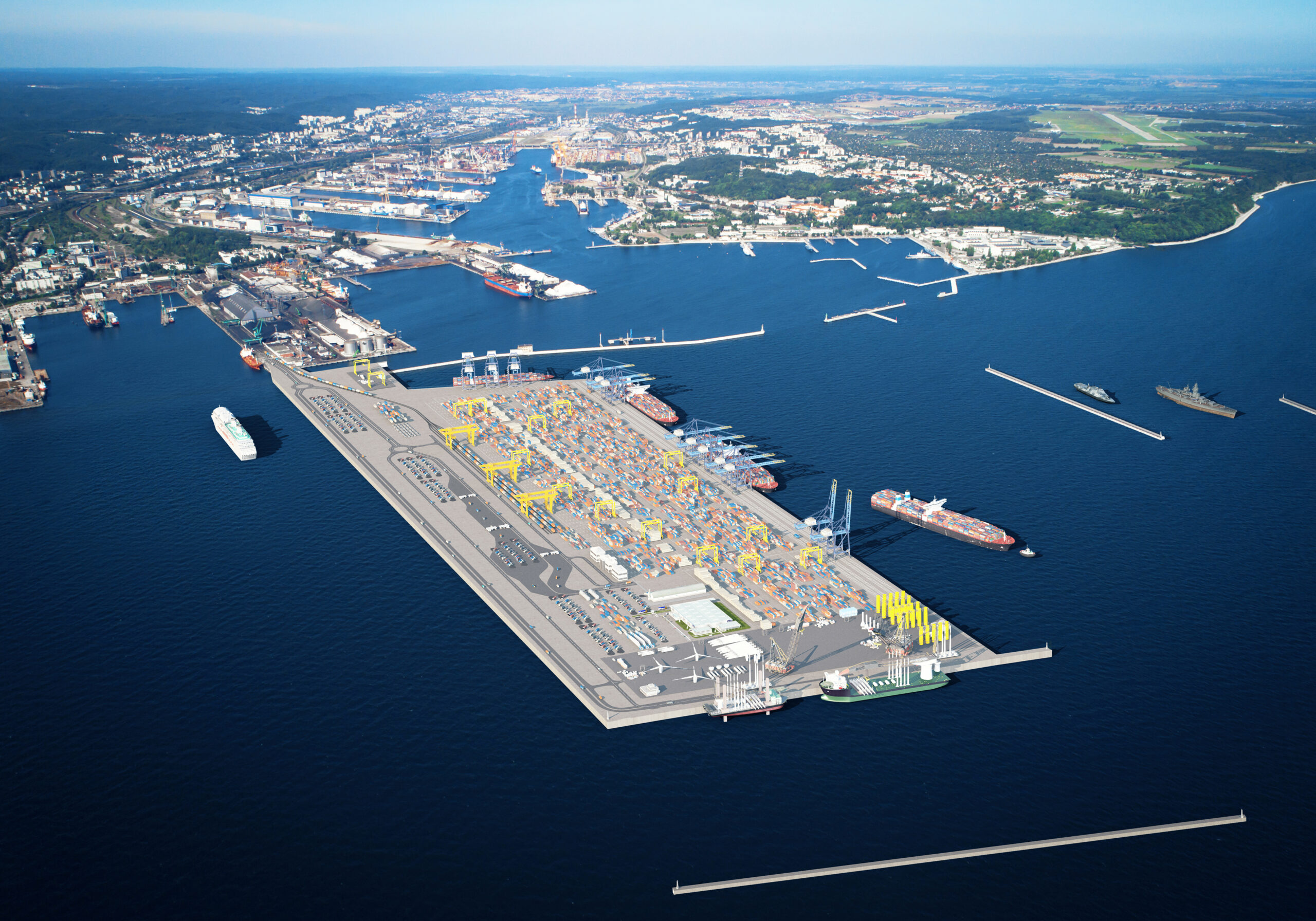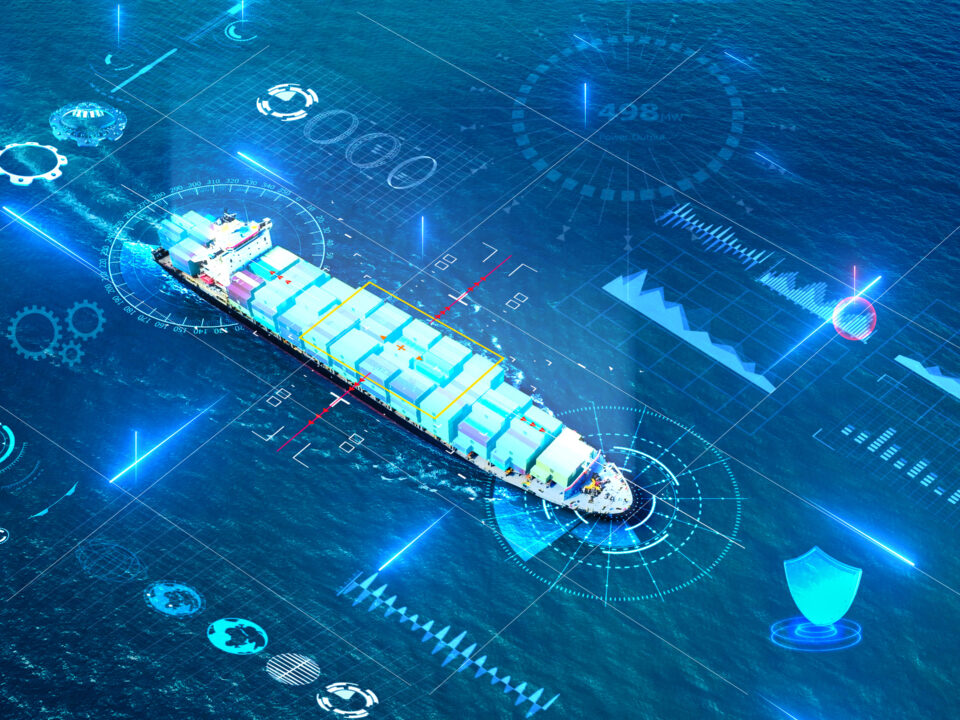
Routes to new ports and terminals
8 July 2024
NIS2 just around the corner
22 July 2024Despite the clear advantages and the need for rapid decarbonisation, everything seems to show that cheap and readily available hydrogen in large quantities will only appear nationwide in over a decade. Experts explain that there are still numerous formal obstacles and a lack of large-scale infrastructural projects; at the same time, installations accompanying offshore wind farms could be a significant opportunity in this area.
Insiders see a good chance for the creation of economically viable, and ultimately also large-scale green hydrogen production facilities in projects accompanying Polish offshore wind farms. Specifically, the idea is to implement hydrogen production in situations where the demand for wind-generated electricity declines and the consumer does not purchase it; the „free” electricity at that point can be used to power an electrolyser to produce hydrogen. Several such projects are to be built off the coast of Sweden over the next few years, which will additionally use the oxygen produced in the electrolysis process to oxygenate seawater. In Poland, several investors in offshore wind farms have talked about similar installations, but words have not yet turned into announcements of concrete investment projects.
Tomasz Pelc, CEO of the consulting company Nexus Consultants and author of many projects related to hydrogen and the offshore wind industry, points out that in 2050 there may be a multitude of installations and companies producing electricity on the Polish market. Each of them will be competing with others to obtain a good price for energy.
– Given the circumstances, using surplus energy from offshore wind farms to produce hydrogen, meaning actually storing this energy, seems an exceptionally sensible idea. Especially as there will be sea water available for the electrolysis of the hydrogen and heat from heating transformer stations. Hydrogen is quite a difficult substance to store, hence the demanding technology involved in producing high-pressure hydrogen storage tanks. And as we will probably have gigawatt hours to manage, large-scale storage facilities will be needed. And it so happens that Poland has salt caverns relatively close to the Baltic Sea, which could become ideal storage facilities – believes T. Pelc.
And what is the application of hydrogen in shipping? Marine hydrogen-based propulsion technologies (liquefied hydrogen, compressed hydrogen or battery-hydrogen solutions) are still mostly used for small ferries sailing in Scandinavian countries. Such vessels are therefore floating laboratories for testing hydrogen propulsion; because of their rather short and regular voyages on predetermined routes, they can bunker this alternative fuel relatively frequently and easily. The next step could be the use of hydrogen in short sea shipping and also as a propulsion system for offshore wind farms.
Commercially available technology has still not solved the biggest challenge: using hydrogen in short sea shipping, namely its low volumetric energy density – a litre of liquid hydrogen contains only 8MJ of energy, which is actually four times less than a litre of petrol. This characteristic of the fuel severely hampers the economic use of hydrogen in shipping. An additional challenge is how to store the fuel – liquid hydrogen must be stored at a very low temperature of -253°C, and compressed hydrogen requires a pressure of 700 bar. The still „vestigial” interest in hydrogen as a maritime fuel is also mentioned in a report by the classification society DVN published in July 2023 and named “Martime Forecast to 2050”, which showed that at that time there were only 5 ships with such propulsion at sea, with a further 5 units ordered from shipyards. In comparison, the report showed huge interest in LNG as an alternative fuel, with as many as 829 ships with such propulsion ordered at the time.
Poland’s hydrogen strategy until 2030, on the other hand, indicates that in 6 years’ time, annual production could reach 193,000 T of hydrogen per year, which would cover 99.4% of the demand for this raw material in the domestic economy. Some experts declare that such assumptions will be difficult to meet and that we will have to wait even over a decade for cheap, easily accessible and “green” hydrogen. According to T. Pelc, Polish plans for the realisation of offshore wind farms are already delayed; he also similarly assesses hydrogen-related activities, which are implemented too late and on too small a scale.
– In our country, the ideas of building hydrogen power stations for vehicles or electrolysers with a capacity of 5 MW cause a sensation. Meanwhile, as a company we have had the opportunity to cooperate on a project located in the Netherlands to build a 200 MW electrolyser plant for the production of e-methanol, and a project will soon start in Finland where the electrolyser plant will reach a capacity of almost 600 MW. When looking together at information from Poland’s Energy Policy until 2040, the National Energy and Climate Plan, the energy needs resulting from the implementation of the Polish Hydrogen Strategy (after its necessary update), the problem is evident. Between 2025 and 2035, we will not have sufficient RES energy to produce green hydrogen and we are facing possible energy problems, including but not limited to blackouts – warns T. Pelc.
Article developed with Namiary na Morze i Handel magazine
phot. Namiary na Morze i Handel magazine






